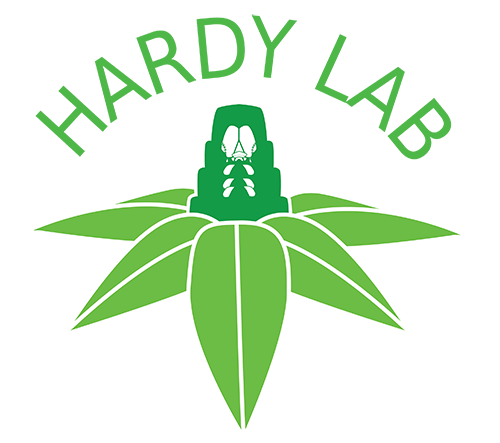Valid Names Results
Cryptostigma urichi (Cockerell, 1894) (Coccidae: Cryptostigma)Nomenclatural History
- Lecanium urichi Cockerell 1894k: 203. Type data: TRINIDAD: in nest of Crematogaster brevispinosa Mayr.. Syntypes, female, Type depository: Washington: United States National Entomological Collection, U.S. National Museum of Natural History, District of Columbia, USA; accepted valid name
- Neolecanium urichi (Cockerell, 1894); Cockerell 1902k: 451. change of combination
- Akermes quinquepori Newstead 1917: 349. Type data: GUYANA: Georgetown, on Microlobium acaciaefolium.. Syntypes, female, Type depository: London: The Natural History Museum, England, UK; junior synonym
- Cryptostigma quinquepori (Newstead, 1917); Morrison 1929: 50. change of combination
- Cryptostigma bunzlii Green 1933: 57. Type data: SURINAM: on Erythrina sp.. Holotype, female, Type depository: London: The Natural History Museum, England, UK; junior synonym (discovered by QinGu1989, ).
- Cryptostigma urichi (Cockerell, 1894); Kondo 2010b: 66-70. change of combination Notes: Lectotype, designated in Kondo, 2010b. Lecanium urichi Cockerell, adult .. TRINIDAD & TOBAGO: Trinidad, West Indies, (Type description: 9/1893, coll. Urich, ex in the nest of an ant Crematogaster brevispinosa), slide mounted from USNM
Common Names
Ecological Associates
Hosts:
Families: 5 | Genera: 7
- Fabaceae
- Erythrina | Green1933 QinGu1989
- Macrolobium acaciifolium | Newste1917 QinGu1989
- Pithecellobium | Morris1922 | (= Pithecollobium)
- Moraceae
- Ficus | Morris1922
- Polygonaceae
- Triplaris weigeltiana | Morris1929 | (= Triplaris surinamensis)
- Smilacaceae
- Smilax | Cocker1897r
- Smilax campestris | Hempel1900a Iherin1897
- Urticaceae
- Cecropia | Morris1929
- Cecropia angulata | Morris1922
Associates:
Families: 3 | Genera: 5
- Formicidae
- Azteca | Kondo2010b Morris1922
- Azteca alfari | Kondo2010b
- Azteca oecocordia | NascimPeKo2013
- Camponotus novogranadensis | Kondo2010b
- Crematogaster brevispinosa | Kondo2010b
- Pseudococcidae
- Farinococcus multispinosus | NascimPeKo2013
- Termitidae
- Amitermes excellens | Kondo2010b | (=Hamitermes excellens)
Geographic Distribution
Countries: 7
- Belize | Kondo2010b
- Brazil | Cocker1896d
- Rio Grande do Sul | Cocker1897r Iherin1897
- Sao Paulo | Kondo2010
- Colombia | Kondo2001
- Grenada | Cocker1896d
- Guyana (=British Guiana) | Green1933 Morris1922 Newste1917 QinGu1989
- Suriname | Green1933 QinGu1989
- Trinidad and Tobago
- Trinidad | Cocker1896d Iherin1897 Morris1922
Keys
- CaballKo2024: pp.5 ( Adult (F) ) [Species associated with coffee roots in Colombia]
- KondoRo2022: pp.551-552 ( Adult (F) ) [species of Cryptostigma]
- KondoRo2022: pp.552-553 ( First instar ) [known nymphs of Cryptostigma]
- Kondo2010b: pp.9-10 ( Adult (F) ) [Key to the adult females of Cryptostigma Ferris]
- Kondo2010b: pp.10 ( First instar ) [Key to the known first-instar nymphs of Cryptostigma Ferris]
Remarks
- Systematics: C. urichi appears morphologically closest to C. cylindrium and C. melissophilum, but can be easily recognized by an extra pair of orbicular pores. The first-instar nymphs of C. urichi appear morphologically similar to those of C. inquilinum, but can be easily separated from the latter by the presence of a claw denticle (absent in C. inquilinum). (Kondo, 2010b) 2 syntypes of Neolecanium urichi, reportedly deposited at the USNM (Cockerell, 1894) as slides, are missing. Therefore, a lectotype was designated in Kondo, 2010b from a collection of specimens slide-mounted from the type dry material labelled: "Lecanium urichi (Cockerell)", deposited at the USNM. Cockerell’s original description of L. urichi agrees well with the morphology of the specimens obtained from the dry material. Lecanium urichi was found to be a member of the genus Cryptostigma, and is morphologically identical to Akermes quinquepori Newstead, which was recognized by Kondo, 2010b as a junior synonym. Like most of the species in the genus, C. urichi is usually tended by ants within cavities and crevices in the bark and stems of its host (Morrison, 1922). Green (1933) collected C. urichi (as C. bunzlii) from large roots of Erythrina sp. in Surinam, although the roots referred to by Green were probably the large exposed roots and not those underground. (Kondo, 2010b)
- Structure: Red-brown, very shiny, nearly circular, moderately convex, segments marked on upper surface by black or blackish transverse lines interrupted at intervals (Cockerell, 1894). Young adult females orangy in life (J.H. Martin notes on slides collected in Belize, 6/20/2002). (Kondo, 2010b) The adult female C. urichi can be diagnosed by the following features: (i) oval body shape, (ii) dorsal setae absent, (iii) dorsum with 5 orbicular pores, (iv) cribriform platelets present, (v) dorsal surface of anal plates with about 10-17 setae, (vi) with 3 stigmatic setae per cleft, although often broken off, (vii) apodemes conspicuous on dorsal derm marginally and submarginally, and (viii) presence of a marginal band of multilocular disc-pores around abdomen. (Kondo, 2010b) The first-instar nymph of C. urichi can be diagnosed by the following combination of features: (i) dorsal setae present in 2 longitudinal rows of 5 pairs, (ii) each anterior and posterior stigmatic cleft with 1 stigmatic seta, (iii) with 6-8 marginal setae between anterior and posterior stigmatic setae, (iv) antennae 6 segmented, (v) with 1 pair of submedian abdominal setae on last 3 abdominal segments, (vi) each anterior stigmatic furrow with 5-9 pores and each posterior furrow with about 8-11 pores, and (vii) with a pair of microducts between each pair of submarginal setae on abdomen. (Kondo, 2010b)
- Biology: Attended by the ant Crematogaster brevispinosa Mayr (Hempel, 1900a).Attended by the ant Azteca alfari cecropiae, in Surinam (Morrison, 1929).
- General Remarks: Good description and illustration of the adult female given by Green (1933) Morrison (1922).
Illustrations
Citations
- BenDov1993: catalog, 98, 194
- CaballKo2024: illustration, key, morphology, 5
- Cocker1894k: description, taxonomy, 203
- Cocker1896b: distribution, 331
- Cocker1896d: distribution, host, 306
- Cocker1897c: distribution, host, taxonomy, 241
- Cocker1897r: description, distribution, host, 71
- Cocker1902e: taxonomy, 143
- Cocker1902k: taxonomy, 451
- Cocker1902p: distribution, 254
- CorseuBa1971: distribution, host, 239
- Fernal1903b: catalog, 177
- Green1933: description, distribution, host, illustration, taxonomy, 57-58
- Hempel1900a: description, taxonomy, 423
- Iherin1897: distribution, host, 408
- Kondo2001: distribution, host, taxonomy, 42
- Kondo2010b: biology, description, distribution, host, key, morphology, revision, taxonomy,
- KondoRo2022: key, 552, 553
- Morris1922: description, distribution, host, illustration, taxonomy, 143-145
- Morris1929: distribution, host, 50
- NascimPeKo2013: ecology, host, illustration, life history, 511-514
- Newste1917: description, distribution, host, illustration, taxonomy, 349-350
- QinGu1989: distribution, host, 225
- Willia2017a: catalog, list of species, 207, 213



